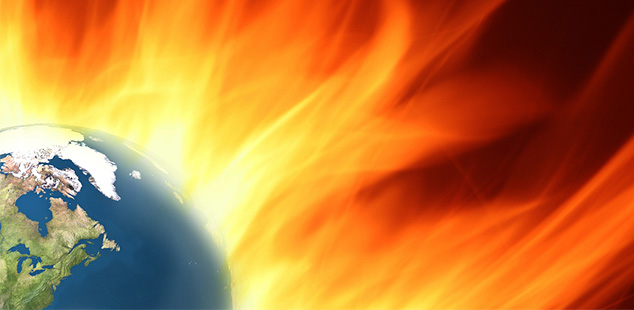
Scientists and politicians have fiercely debated the topic of global warming for the past few decades, with passionate arguments on both sides. Increasingly, this topic has affected other areas, including economics. The massive difference that one or two degrees can make on our planet affects a number of markets, including metal commodities. While you may not think a hotter day would affect gold mining the way it would energy consumption, a new situation in the Canadian Arctic suggests otherwise. A warm winter has restricted access to pivotal Yukon gold fields, making it harder for this precious metal to reach consumers, potentially ratcheting up the price of gold.
Gold Producers May Not Be Able to Reach Canadian Mines
The polar vortex that has shifted a massive quantity of icy cold Arctic air masses resulted in bitterly cold winters through the early months of 2015, with record snowfalls. This winter, the snowfalls have come from tropical storms welling up in the Atlantic on the east coast, but throughout much of the North American continent the winter has proven quite mild. Go far enough north and temperatures above 32 degrees aren’t quite a blessing, however. The epic ice road that connects Yellowknife to northern gold mines hasn’t yet materialized due to the warmer temperatures and lack of a new polar vortex.
The Tibbett Ice Road hasn’t yet formed any ice, and authorities expect that it may not do so for another month. This leaves gold producers like the Echo Bay mine under water. The Canadian Mounted Police have halted all access to the remote parts of the Northwest Territories until the conclusion of January, when they hope the temperatures will drop far enough to create the all-important ice bridge across rivers and lakes. They hope that the ice freezes sooner rather than later in order to avoid a repeat of the 2006 crisis, when gold mines had to fly their product directly to the Yellowknife airport, spending about $100 million in aviation fuel. At a time when the price of gold has tumbled end-over-end, this prospect makes a number of gold miners in northern Canada particularly nervous. What will happen to gold prices if there is shorter supply in the market? Theoretically, less supply means higher gold prices. While this may be no good for the gold miners, for gold investors, this could prove to be a blessing in disguise.
How Mining Troubles Could Affect Gold Prices
The need for Canadian ice bridges comes at a pivotal time for the nation’s mining industries. The election of the Trudeau government came with a major promise to invest billions on infrastructure, including a $170 million all-weather road that connects Yellowknife to the important mining regions of northernmost Canada. The Canadian Parliament for its lack of sustainable plans for Arctic commerce and transportation. It’s not clear whether the Trudeau administration will snap to the construction of a new road, however, given the plummeting price of oil that has thrown the Canadian economy into a recession.
There are only 42,000 people living in the Northwest Territories, connected by only 570 total miles of paved roads through a region twice the size of Texas. As soon as winter comes in late October, all operations require the important ice bridges, three to four feet thick, so that trucks can take an overland route. With winters shorter and warmer, however, the lack of transport routes has quite literally put the Canadian gold mining industry onto thin ice. While mining is only one factor that influences the price of gold, worldwide mining trends could help shape the direction of the yellow metal on the market through 2016.


